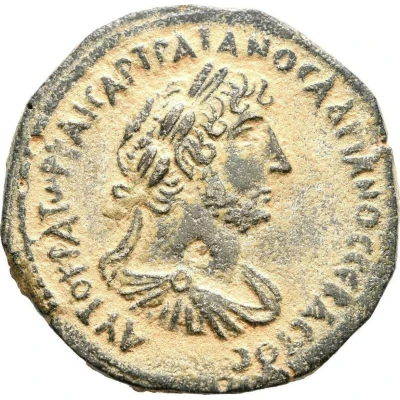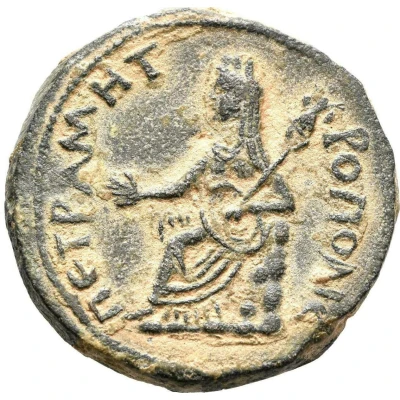


© Leu Numismatik
As - Hadrianus Petra
| Bronze | 12 g | 28 mm |
| Issuer | Petra (Arabia) |
|---|---|
| Emperor | Hadrian (Publius Aelius Hadrianus) (117-138) |
| Type | Standard circulation coin |
| Years | 117-138 |
| Value | As (1⁄16) |
| Currency | Denarius (49 BC to AD 215) |
| Composition | Bronze |
| Weight | 12 g |
| Diameter | 28 mm |
| Shape | Round (irregular) |
| Technique | Hammered |
| Orientation | Variable alignment ↺ |
| Demonetized | Yes |
| Updated | 2024-10-10 |
| Numista | N#86119 |
|---|---|
| Rarity index | 90% |
Reverse
Tyche seated left on rock, hand outstretched, holding trophy over shoulder
Script: Greek
Lettering: ΠΕΤΡΑ ΜΗΤΡΟΠΟΛΙC
Translation: Petra Metropolis
Edge
Plain
Comment
In 106 AD, when Cornelius Palma was governor of Syria, the part of Arabia under the rule of Petra was absorbed into the Roman Empire as part of Arabia Petraea and became its capital. The native dynasty came to an end but the city continued to flourish under Roman rule. It was around this time that the Petra Roman Road was built. A century later, in the time of Alexander Severus, when the city was at the height of its splendor, the issue of coinage comes to an end.https://en.wikipedia.org/wiki/Petra#Roman_rule
Interesting fact
One interesting fact about this coin is that it features an image of the Roman Emperor Hadrian, who was known for his love of Greek culture and his extensive travels throughout the Roman Empire. The coin was minted during his reign, which lasted from 117 to 138 AD, and it was likely used in everyday transactions in the city of Petra, which was an important center of trade and commerce in the ancient world. Despite being made of bronze, a relatively common metal at the time, the coin is still considered a valuable artifact today due to its historical significance and the insight it provides into the culture and economy of the Roman Empire.